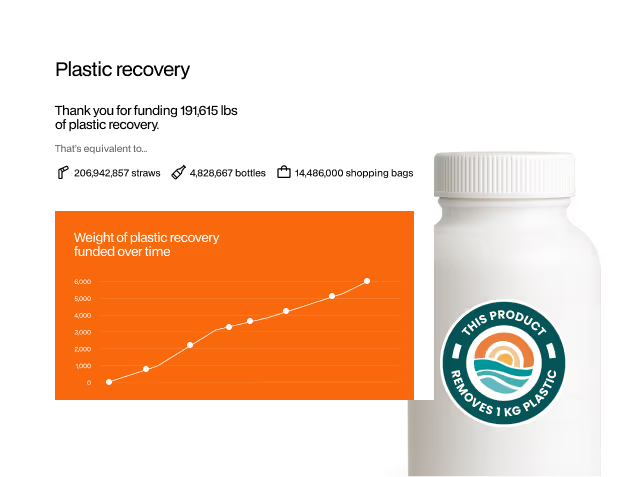The climate movement must rise above hype culture towards real planetary action.
Over the holidays, I found myself at the movies, watching Spider-Man: No Way Home. As superhero films go, it was fabulous. But while walking out, surrounded by fans gushing over the experience, I couldn’t help but draw a parallel to something closer to home.
There is little difference between how Hollywood designs blockbusters and the way much of our world approaches climate action.
I like to call this phenomenon ‘Climate Hype’, or in other words, recasting nuanced environmental problems, solutions or changemakers into romanticized and over-simplified storylines.
Slumdog Millionaire, tabloid journalism and poverty porn — the concept of Climate Hype follows the path of many sociocultural paradigms of the last few decades, and that’s because its origins are fundamentally intertwined with essential human emotions.
However, what’s different this time around is that the fate of life on Earth as we know it is now on the line. So how do we break free and make crucial progress?
Follow me as I try to tell the fascinating story of Climate Hype and unlock actionable insights along the way.
Act One: The rise of climate hype — people need heuristics to grasp the apocalypse
Let’s face it — the climate crisis is fundamentally complex, and with such an issue, we all have a tendency to seek out and construct simplistic plots to wrap our heads around.
In psychology, a heuristic is defined as a mental strategy that enables us to speed up decision-making amidst exposure to a tremendous amount of information.
And to make sense of a potential apocalypse decades into the future caused by invisible particles in the air — you guessed it — a lot of heuristics are required.
Another way to look at the rise of Climate Hype is to imagine the climate crisis as a network of hundreds of nodes, where each node represents a simple story that consists of a problem, a solution, and a resolution.
Marine plastic debris and ocean cleanups make up one such node, while big oil and renewable energy make up another.
It’s simple to help your customers, stakeholders and the public make sense of any one node in particular, but it’s a hell of a lot more complicated to help them grasp how one node interplays with another.
And in this vacuum arises bias, misinformation, and ultimately, Climate Hype.
The solution is simple yet profound: as decision-makers, we must educate ourselves and create this network of nodes in our own minds, before we go ahead and try to break it down for those we influence.
Act Two: Why is hype problematic — eroding trust, promoting individualism, skewing priorities
First, the over-romanticization of solutions that are inherently flawed erodes trust in climate initiatives at large and the public’s confidence in our ability to secure our planet’s future.
In recent years, we’ve witnessed a myriad cases where storytellers elevated ‘genius’ innovators up on a pedestal, only to see them fall from grace shortly after.
As these cases stack up one after another, disillusionment and skepticism kick in like a silent killer. After all, hype might be temporary, but the negative impact it has on public sentiment lasts forever.
Second, simplistic portrayals of sustainability actions, which dominate much of corporate and non-profit storytelling today, promote individualistic differentiation over and above collective progress.
At the end of the day, a hero plot needs only one catastrophe, one villain, one superhero and one happy ending. ‘The hyping up of the singular’, as I’d like to describe this practice, promotes a monopolistic, zero-sum-game view of the world that is fundamentally incompatible with what’s required to avoid a tragedy of the commons.
And finally, what is perhaps the greatest threat from Climate Hype is that it subliminally, yet with brutal precision, biases capital, time and prioritization towards climate initiatives most capable of telling a good story.
And this, in my opinion, constitutes the greatest yet most invisible greenwash our generation has ever witnessed.
Act Three: Recognize symbolism for what it’s worth, and scale greater heights
Here’s the thing — no matter how destructive Climate Hype might be as a whole, I will be the first to recognize that the symbolism of it all has had an irreversibly positive impact on our world.
When Adi, Svanika and I first started exploring plastic waste as an issue back in 2016, the cause resonated with almost no one. But after a series of viral moments like the infamous ‘straw in a turtle’s nose’ video and BBC’s Blue Planet II, plastic pollution rose up to the top of everyone’s mind overnight.
If it wasn’t for those events, I wonder where rePurpose Global would be today. That clip of the helpless turtle became a powerful rallying cry that sparked a sea change, and all of a sudden, plastic straws were being banned left, right and center.
In reality, the impact was far less sensational, as straws make up at most 4% of ocean plastic.
And furthermore, it has taken us years to move past the emotionally fueled, yet pragmatically ineffective approach of scooping plastic out of the oceans instead of preventing it from ending up in nature in the first place.
As powerful as symbols can be to inspire movements, we need to see them for what they are — tools to catalyze action — and not ascribe a greater purpose to them than is necessary.
Act Four: Dig beneath the vanity metrics, evaluate solutions for their impact on the system
Now you might ask — how do we tell if a solution is worth the hype? Let’s look at a concrete example.
In the realm of supply chain transparency, blockchain has recently been hyped as the panacea for data verification and traceability. But the reality is far less glamorous.
Yes, blockchain is an innovative tool, but software’s true value can only be realized when human-centered, chain-of-custody processes are in place on the ground as a prerequisite.
In data science, people often refer to the “garbage in = garbage out” principle. Software alone is simply not effective in avoiding the “garbage in”.
In other words, the effectiveness of one innovation depends on how well it connects with others in the ecosystem.
So for decision-makers, the best way to evaluate the merit of any singular climate solution is to pinpoint what role that solution plays in relation to others.
Once they define that, the pros, cons and trade-offs become abundantly clear, paving the way for a portfolio of climate actions that unlocks systems change.
And finally, instead of rushing to be the hero, the only way out of our crisis is to stay humble
The truth is that the climate crisis is a complex, ever-changing thing. There’s no single silver bullet solution that is going to magically solve it. It is the coming together of many moving parts that will ultimately make a meaningful impact.
And only when we truly internalize this humbling realization can we start to combat Climate Hype. And in my opinion, the best way to do so is to dial down the performative instincts that come with an emotionally charged domain and start embodying humility and empathy through every single thing we do.
Because ultimately, the lights will turn back on, the credits will roll, and the time will come for us to return from the Tom Holland-induced cloud nine, back down to Planet Earth.
This piece first appeared in rePurpose Global’s newsletter Planet in Progress.



.avif)








